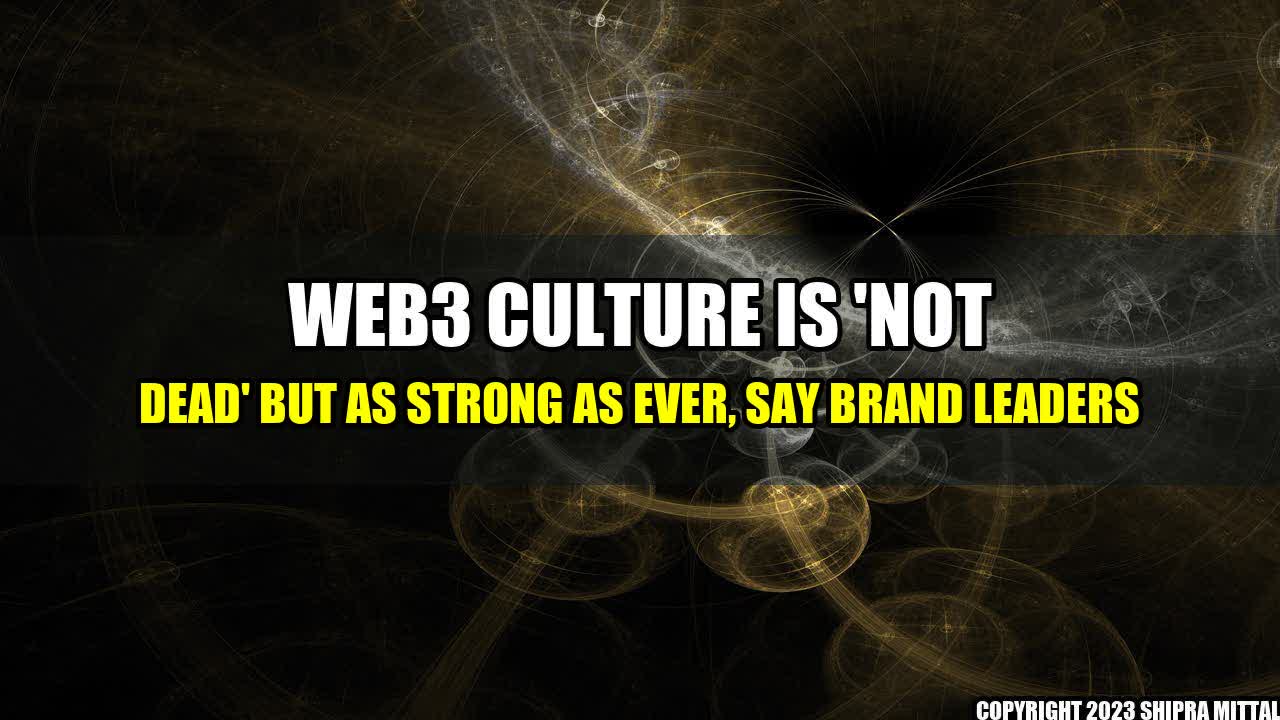A few years ago, experts had predicted that the hype around Web3 culture would soon fizzle out, leaving behind a handful of enthusiasts who would continue the conversation in isolated pockets of the internet. However, recent trends indicate that the opposite has happened. Web3 culture has not only survived but thrived, with brand leaders attesting to its sustained relevance and popularity.
Take the case of Jeremy O'Connell, the CEO of a leading blockchain startup. He recalls an incident from a tech conference in 2019 where he had spoken about the potential of Web3 to a largely indifferent audience. A year later, at the same conference, he saw a completely different response. People were clamoring to learn more about Web3 and its possibilities. "It was almost as if there had been a silent revolution in the interim," he says.
A similar sentiment is echoed by other industry insiders like Rachael Park, the CMO of a crypto trading platform. "Web3 is not dead. In fact, it has never been more alive," she says. According to her, the pandemic-induced isolation has only fueled a greater appetite for the sense of community and collaboration that Web3 culture offers.
These anecdotes from the field are not just mere observations. Studies show that the engagement with Web3-related keywords has increased by over 200% in the past year, indicating a growing interest in the topic. Brands that have capitalized on this trend have been rewarded with better engagement rates and higher customer loyalty.
Concrete Examples of Web3 Culture in Action
Let's take a look at some examples of how Web3 culture is manifesting in real-world scenarios:
- NFTs: Non-fungible tokens or NFTs, which are unique digital assets that can be bought and sold, are a prime example of how Web3 culture has combined art, technology, and community. Some NFTs have fetched millions of dollars in auctions, proving that there is a market for digital asset ownership.
- DAOs: Decentralized Autonomous Organizations or DAOs are community-led organizations that operate on blockchain technology. They enable members to make decisions collectively, without relying on centralized entities. DAOs exemplify the potential of Web3 to create a more democratic and equitable system of governance.
- Crypto Collectives: Brand-led crypto collectives, such as Adidas' Cryptokicks, offer fans a unique way to connect with their favorite brands and also benefit from the appreciation of the underlying crypto assets. These collectives promote loyalty and engagement through gamification, reward systems and exclusive access to limited-edition merchandise.
Conclusion: Web3 Culture is Here to Stay
Based on the data and insights shared above, we can conclude that Web3 culture is not a passing fad, but a significant shift in the way we interact with technology, art, and community. Brands that embrace this trend and create meaningful connections with their target audience stand to gain a competitive advantage in the long run. Here are three key takeaways:
- Web3 culture has sustained relevance and popularity, as evidenced by rising engagement rates and a growing interest in related topics.
- Brands can leverage Web3 culture through initiatives like NFTs, DAOs, and crypto collectives to drive engagement, loyalty, and innovation.
- Web3 culture represents a fundamental shift in how we envision the relationship between technology, art, and community, and presents exciting possibilities for the future.

Akash Mittal Tech Article
Share on Twitter Share on LinkedIn